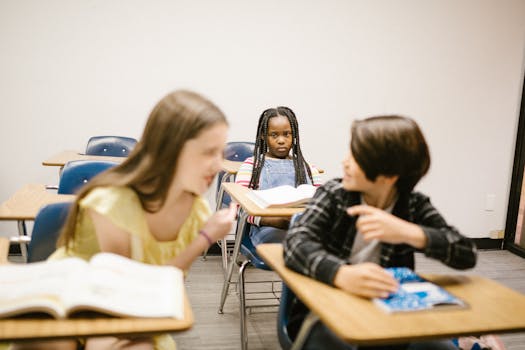What is peer interactions?

What is peer interactions?
Peer interactions are a fundamental aspect of our social fabric, influencing our development in various contexts such as education, the workplace, and personal relationships. These interactions occur when individuals engage with one another on a level playing field, often sharing ideas, feedback, and support. The significance of peer interactions cannot be overstated, as they foster collaboration, enhance learning, and contribute to personal growth.
Defining Peer Interactions
Peer interactions refer to the processes of communication and collaboration between individuals of similar status, often within a shared context. Unlike hierarchical interactions, where one party may hold more authority, peer interactions emphasize equality. This distinction underscores how peers can contribute uniquely to each other’s experiences.
In educational settings, peer interactions often manifest through group work, discussions, and collaborative learning projects. In the workplace, they can appear in team meetings, brainstorming sessions, and informal exchanges during breaks. These interactions are vital for building connections, sharing knowledge, and developing social skills.
Types of Peer Interactions
Collaborative Learning
Collaborative learning is a popular form of peer interaction where individuals work together to achieve a common goal. This approach not only enhances understanding of the subject matter but also promotes teamwork and critical thinking skills. For instance, students collaborating on a project can pool their diverse knowledge, leading to richer insights.
Peer Mentoring
Peer mentoring involves one individual providing guidance or support to another within a similar context. This relationship can be particularly beneficial in educational environments, where older students might mentor younger ones, helping them navigate challenges and build confidence. Such interactions foster a sense of community and belonging.
Informal Discussions
Informal discussions are spontaneous exchanges that often occur in relaxed settings. These conversations can lead to meaningful insights and connections, allowing individuals to explore topics in a less structured manner. Whether during lunch breaks or social gatherings, these interactions play a crucial role in building relationships.
The Importance of Peer Interactions
Peer interactions are valuable for several reasons, contributing to personal development and productivity across diverse settings.
Enhancing Learning Outcomes
Engaging with peers can significantly enhance learning outcomes. Through shared knowledge and diverse perspectives, individuals can grasp concepts more thoroughly. For example, studies show that collaborative learning can lead to better retention of information and improved academic performance. A report on peer interaction highlights how these experiences enrich learning environments.
Building Social Skills
One of the most critical benefits of peer interactions is the development of social skills. Regular engagement with peers helps improve communication and interpersonal abilities. As individuals navigate social dynamics, they learn empathy, cooperation, and conflict resolution. These skills are essential not only in personal relationships but also in professional contexts.
Fostering Motivation and Accountability
Peer interactions can boost motivation and create a sense of accountability. When individuals work together, they often feel more responsible for their contributions. This shared sense of responsibility can inspire them to perform better and stay committed to their goals. Knowing that others are counting on you can be a powerful motivator.
Strategies for Effective Peer Interactions
Enhancing peer interactions requires intentional strategies that promote engagement and collaboration.
Creating a Supportive Environment
A positive environment is crucial for effective peer interactions. Encouraging open communication and collaboration helps individuals feel safe to express their thoughts and ideas. This can be achieved by fostering a culture of respect and inclusivity, where everyone feels valued.
Utilizing Technology for Peer Interactions
In today’s digital age, technology plays a vital role in facilitating peer interactions. Tools like video conferencing, collaborative platforms, and messaging apps allow individuals to connect regardless of location. For example, remote teams can use platforms like Slack or Zoom to maintain communication and collaboration, enhancing team dynamics.
Challenges of Peer Interactions
While peer interactions can be incredibly beneficial, they also come with challenges that can hinder effective communication and collaboration.
Overcoming Miscommunication
Miscommunication can arise in any interaction, particularly when individuals have different communication styles or backgrounds. To manage this, it’s essential to establish clear channels of communication and encourage feedback. Active listening and asking clarifying questions can help mitigate misunderstandings and ensure everyone is on the same page.
Conclusion
Incorporating more peer interactions into our daily lives can lead to improved productivity and personal growth. Whether in educational settings, the workplace, or personal relationships, these interactions play a pivotal role in shaping our experiences. By fostering an environment that encourages collaboration and communication, we can tap into the full potential of peer interactions. Start embracing these interactions today, and see the positive impact they can have on your life and the lives of those around you.